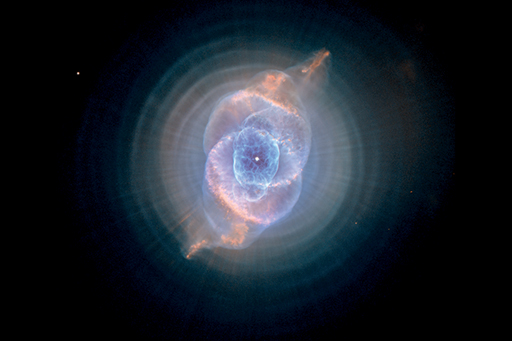2.3.7 The final remnants
So far, you have seen that low mass stars (like the Sun) and high mass stars (like Rigel) have different evolutionary pathways, but both types end up ejecting large quantities of material back into space.
This process doesn’t lead to the complete destruction of the star – a dead remnant is left behind, with the remnants from low and high mass stars having different properties.
White dwarfs are the remains of low mass stars such as the Sun. After the outer layers of the star are ejected as a planetary nebula, the hot stellar core is exposed. The core is made of carbon and oxygen from nuclear fusion, and is still very hot, because the nuclear reactions have only just finished. Surface temperatures are up to around 150,000 K – although some old white dwarfs may be as cool as 5000 K.
White dwarfs are very faint, much less luminous than the Sun. This combination of high temperature and low luminosity is because they are very small – typically only about the size of the Earth. Despite this, they still contain a large amount of the matter that made up the original star – the largest white dwarfs maybe up to 1.4 times the mass of the Sun, and so they are extremely dense objects, with densities around a thousand million times as dense as rock.
The final fate of a white dwarf is a slow dwindling into obscurity, as they gradually radiate away their heat, becoming cooler and progressively dimmer. Because white dwarfs have a smaller surface area than other stars, it takes a long time for all the energy to be radiated away – about 10 billion years, which is about the age of the universe. Low mass stars end up as cold dark spheres, rich in carbon and oxygen.
In the next section you’ll discover what happens to the remnants of larger stars.

